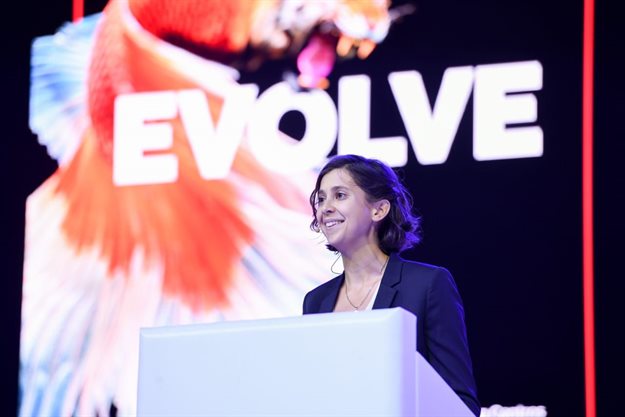#SACSCCongress: How green roofs can contribute to people, profit and planet

Well, that's exactly what the team from Brooklyn Grange did in 2010 on the roof of a building in Long Island City, New York - they took 45,000ft2 of vacant space and started a rooftop farming business. This initial venture, however, is not where their business model ends as it organically expanded into other areas that helped them achieve their triple bottom line of people, profit, and planet.
Cecilia de Corral, director: design/build at Brooklyn Grange, shared their journey at the South African Council of Shopping Centres (SACSC) Annual Congress held in Cape Town last week and how turning vacant rooftop space into green spaces can have a positive financial, environmental and community impact for businesses.

Rooftop farming in New York City
Brooklyn Grange currently has three farms, the first in Long Island City, another in Brooklyn Navy Yard at 65,000ft2 which opened in 2012, and lastly the Sunset Park farm which opened this year at a massive 140,000ft2. Their expansion was supported by the New York City Department of Environmental Protection, a city agency that funds 100% of green roof construction, barring any structural work needed on the buildings.
The three Brooklyn Grange rooftop farms make up a total of roughly 3.5 acres in cultivated area and can grow anything that a ground-level farm can grow, except fruiting trees which would require three times as much soil currently used. Their products are distributed to chefs and restaurants, retailers, and farmers' markets.
"While our original business plan anticipated us earning a return by expanding to seven farms in five years," explained De Corral, "we found that the value of our business wasn't necessarily in the footprint or the square footage, but rather in the opportunities that were opened up to us through the farms."

Opportunity for events
Brooklyn Grange exceeded its original revenue projections at the five-year mark with just two farms by exploring the variety of opportunities opened up by its sustainable farming business. In an effort to engage more with the communities around its farms, it started using them as events venues hosting workshops, dinners, yoga classes, and weddings.
"Green spaces are offering solutions to us on an environmental level, but I think the piece of the puzzle that people typically disregard is the solutions on a human level - they're satisfying this need that so many city dwellers have of connecting with plants, soil, and green space," said De Corral.
Most of their visitors, up to 7000 annually, are at the Brooklyn Navy Yard farm, but their expansion to the publically accessible Sunset Park location this year is likely to drive a huge increase in this number. "Next year will be our first full year there. We're going to be serving a huge audience and not just young, single people living in Brooklyn, these are going to be families."
"We have over 3.5 acres of farmland that we work to farm. This is the heart and the roots of our business and it probably always will be. But that same cultivated space is what's enabled this super successful events programme. The revenue from the events arm of the business is fuelling additional green space, it's fuelling liveable wages for our farmers and access to our community," explained De Corral.

Multipurpose, green spaces for all
The final arm, and largest revenue driver, of the business is its design/build department which, like its events arm, developed organically from its original intention of adding more green space to the city skyline. Visitors to the farms wanted the same for their vacant rooftop spaces and after a bit of experimentation, Brooklyn Grange now turns what were once cold, inhospitable spaces throughout New York City, into multipurpose, green spaces that serve as a haven for people and wildlife.
One such space is the green roof constructed for Vice Media in Williamsburg, Brooklyn, where the Brooklyn Grange team installed a system that replicated the natural ecosystem of the area prior to human development. The space attracts birds and bees in droves, addresses the company's office overcrowding problem, enables a space for creative opportunities, and forges community-based relationships.

Green roofs also support a number of environmental benefits including reducing the amount of storm water reaching overburdened sewer systems, and lowering temperatures in cities by up to 4 degrees Celsius. De Corral used the Javits Convention Center in New York City as an example of how green roofs can serve the financial needs of a business while also ensuring positive environmental and community outputs.
Once notorious as one of the deadliest buildings for birds in New York, the Javits Convention Center in 2010 wrapped its entire building in bird-safe glass and built a seven-acre green roof. They decreased their energy consumption by 26% and their roof is now home to 29 different bird species. They're now planning a 1.2-million square-foot expansion that will also feature a 25,000ft2 rooftop farm.
"Through this expansion, Javits is going to be feeding tens of thousands of visitors with vegetables that they grow on their own roof. They're also offering an amazing amenities space and an indoor and outdoor events space, all while showcasing who they are as a business and what they're prioritising," said De Corral.
Coming soon to a city near you
Brooklyn Grange, as a business, has been a passionate advocate of the Climate Mobilization Act that was recently passed in New York City, and De Corral emphasised in rounding up her presentation that the community of New York City is just as passionate about taking action on climate change.
"This is not a movement that's limited to New York, it's happening all over the world," she said.
"If you're not already seeing some sort of mobilisation here, you will, and so you should be looking at your roofs now and what they can offer to you for financial, community and environmental growth," De Corral concluded.









